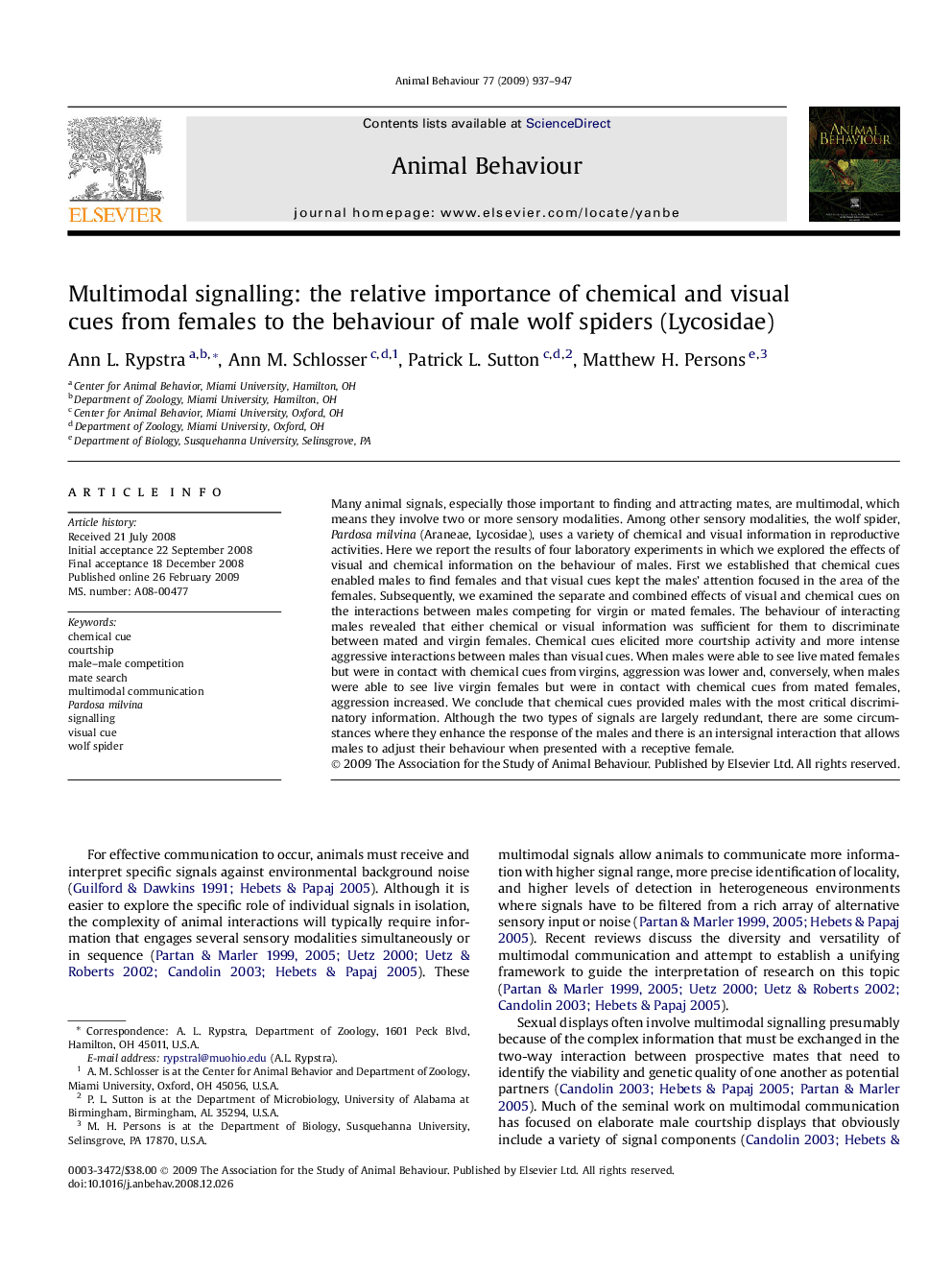| Article ID | Journal | Published Year | Pages | File Type |
|---|---|---|---|---|
| 2417835 | Animal Behaviour | 2009 | 11 Pages |
Many animal signals, especially those important to finding and attracting mates, are multimodal, which means they involve two or more sensory modalities. Among other sensory modalities, the wolf spider, Pardosa milvina (Araneae, Lycosidae), uses a variety of chemical and visual information in reproductive activities. Here we report the results of four laboratory experiments in which we explored the effects of visual and chemical information on the behaviour of males. First we established that chemical cues enabled males to find females and that visual cues kept the males' attention focused in the area of the females. Subsequently, we examined the separate and combined effects of visual and chemical cues on the interactions between males competing for virgin or mated females. The behaviour of interacting males revealed that either chemical or visual information was sufficient for them to discriminate between mated and virgin females. Chemical cues elicited more courtship activity and more intense aggressive interactions between males than visual cues. When males were able to see live mated females but were in contact with chemical cues from virgins, aggression was lower and, conversely, when males were able to see live virgin females but were in contact with chemical cues from mated females, aggression increased. We conclude that chemical cues provided males with the most critical discriminatory information. Although the two types of signals are largely redundant, there are some circumstances where they enhance the response of the males and there is an intersignal interaction that allows males to adjust their behaviour when presented with a receptive female.
